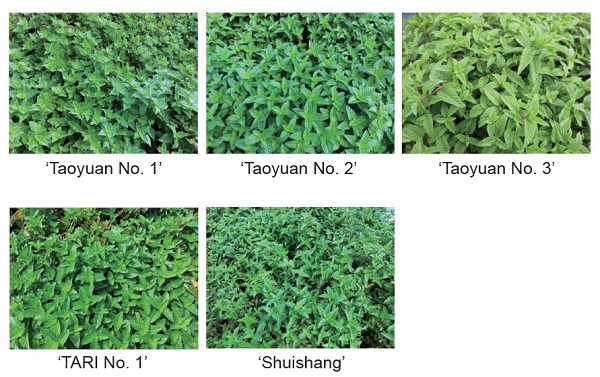Current issue
Author:Tzu-Huan Hung*, Chia-Hua Chang, Chiu-Hua Chen, Tsai-Li Kung, and Yang Yang
Abstract:
This study investigated the differential inhibitory activities of five major Taiwanese Mesona chinensis Benth. cultivars (‘Taoyuan No. 1’, ‘Taoyuan No. 2’, ‘Taoyuan No. 3’, ‘TARI No. 1’, and ‘Shuishang’) against xanthine oxidase and lipase and explored their correlations with rosmarinic acid and caffeic acid content. The experimental results revealed significant inter-cultivar variations in the inhibitory activities against both enzymes among the different M. chinensis cultivars. ‘TARI No. 1’ exhibited the strongest xanthine oxidase inhibition (68.5%), while ‘Taoyuan No. 2’ (59.6%) and ‘Taoyuan No. 3’ (59.2%) showed greater lipase inhibitory effects. A high positive correlation (r = 0.735) was observed between the rosmarinic acid content of M. chinensis extracts and xanthine oxidase inhibition, suggesting rosmarinic acid as a potential indicator for this activity. Conversely, caffeic acid content showed a negative correlation (r = -0.807) with lipase inhibition, implying that other constituents in M. chinensis may contribute to lipase inhibitory activity. Notably, ‘Taoyuan No. 3’, a hybrid of ‘Taoyuan No. 1’ and ‘Taoyuan No. 2’, displayed enzyme inhibitory activity similar to that of ‘Taoyuan No. 2’, suggesting a potentially similar genetic expression pattern for the biosynthetic pathways of active components for enzyme inhibitory activity. These findings provide a basis for selecting specific M. chinensis cultivars for targeted metabolic regulation applications.
Key words:Mesona chinensis, Xanthine oxidase, Lipase, Enzyme inhibition activity, Constituent analysis
Download:![]() PDF Links
PDF Links

 Submit your manuscript
Submit your manuscript
 Guide for authors
Guide for authors